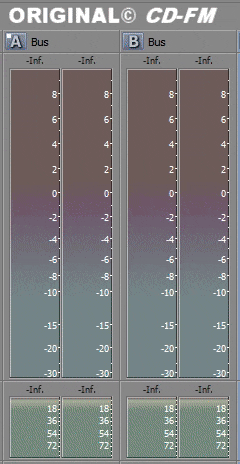All Activity
- Past hour
-
Hello Great music! The impressionistic mood is very well noted. Some things lead to Debussy like setting a Tonic with pedal on low notes or the “la cathédrale engloutie” style chords. But also those continuous arpeggios remind me of some of Henry Cowell's techniques (although he did it inside the piano). It's a harp-like effect. The fourth harmonies here sometimes lead to unexpected harmonic cadences and I quite like that.
- Today
-
Henry Ng Tsz Kiu started following To The Stars | 2025 Revision Progress and Image in G major
-
The Image in G major is the third piece of the four piano pieces I wrote for relaxation after writing the very heavy String Sextet. I try to do something a bit different than the previous two pieces, as I actively use more quartal chords and pentatonics in the whole piece, and also invite a bit of impressionistic chords. This is try personal favourite of the set. Here is the score and YT video: (Final) Image in G major.pdf Like the previous pieces, this one also comes from recycled materials. It comes from an unfinished Piano Suite I composed in 2016 Jan, but only with fragments of it including the first few bars, b.35-38 LH melody and some parts of b.58-72. Don’t know why I went for pentatonics that long ago LoL! One thing to note: b.43-46 is probably inspired by @Fugax Contrapunctus Pabio’s mention of Joe Hisaishi in his review of my Sextet, plus my recent listening experience of his music while watching Miyazaki’s films. Hope you enjoy this small piece! Henry
-

chamber To The Stars | 2025 Revision Progress
Ferrum replied to Ferrum's topic in Incomplete Works; Writer's Block and Suggestions
-
This software is used for Radio-Broadcasts, where High & Low levels are more Even, with less "Drop-Out" It seems to be the standard these days, regardless of the original composers intention. https://bswusa.com/orban-optimod-5950-hd2/ A Visual Representation comparison.
-

Symphonic Overture
Henry Ng Tsz Kiu replied to Thatguy v2.0's topic in Orchestral and Large Ensemble
For a Filmscore guy like him he would just know how to maximise everything in the stupidest way and think he's the best so it's a normal level of artistry for him 🤭 -
Nah not at all. Just make sure to credit the composer if you use someone's music for your own purposes. I noticed that your alterations maxed out the volume no matter what the dynamic levels were supposed to be. Maybe try just making the loud parts louder, but have the wisdom to give subtlety where it's needed.
- Yesterday
-

are these appropriate for children?
Mooravioli replied to Mooravioli's topic in Piano Music, Solo Keyboard
Hello Peter, Thank you for your quick reply to this. I do think your point is very valid, in that the child may need time to really absorb the harmonies and rhythms; I've also included a few unorthodox hand crossings which makes the technique trickier. Now that I think of it, the capybara piece would probably be a mid to late intermediate piece. As for the tempo, I just thought there should be a very subtle and gradual ritardando into the B section(measure 71) starting from measure 57. Perhaps, if I recorded my own piece, the quirky tempo change would be more clear. I'll try to work on learning it myself. very happy you enjoyed the capybara piece, though. It definitely took a while to conceive and the whole piece pretty much grew out of the idea at measure 101 - 104. I am also quite glad I am finding my own style with the piece, though perhaps the blend of styles could be a bit smoother in my subsequent numbers. -
Alant started following Unfinished C major project
-
Any and all feedback (for example if the high arpeggio notes are too repetitive) and advice is appreciated. I like the piece but can’t really think of any new ideas for it
-
Thanks for listening and sharing! Yeah, I struggled with the form quite a bit. It's my first time ever writing a piece this long. I had sketched out all of those different ideas based on the opening motive, so then "the material dictates the form" Yes the piece is definitely tonal, but the note selection is a bit more modern. There is no tertiary harmony at all, for instance, except maybe incidental passing notes. I would describe it as "neotonal". I like tonality enough and will likely always write in that style.
-
(1).thumb.jpg.1336d093d112555a132162dfc44a4d71.jpg)
Just composed this baroque quartet, what do you guys think?
Elad_Hevron replied to Elad_Hevron's topic in Chamber Music
uploaded a new version with score! check it out 🙂- 5 replies
-
- composer
- baroque style
-
(and 1 more)
Tagged with:
-
(1).thumb.jpg.1336d093d112555a132162dfc44a4d71.jpg)
Just composed this baroque quartet, what do you guys think?
Elad_Hevron replied to Elad_Hevron's topic in Chamber Music
uploaded a new version with score! check it out 🙂- 5 replies
-
- composer
- baroque style
-
(and 1 more)
Tagged with:
-
(1).thumb.jpg.1336d093d112555a132162dfc44a4d71.jpg)
Just composed this baroque quartet, what do you guys think?
Elad_Hevron replied to Elad_Hevron's topic in Chamber Music
i uploaded a new version with score! check it out 🙂- 5 replies
-
- composer
- baroque style
-
(and 1 more)
Tagged with:
-
Ferrum started following To The Stars | 2025 Revision Progress
-
It's been a while since I've done work in progress stuff. So, in order to stay motivated, I'm gonna post some progress on this revision. I've been in the mood for doing revision of my older pieces, and I wanna rework them with my current knowledge of composition. I've mentioned before that I've been doing some rework on the Alula Variations but I'd probably put it in indefinite pause. With that said, I really love the themes in this but I felt like I could do better with the current version. I've thickened up the accompaniment, added and varied the articulations on both instruments, experimented with dynamics, added a bunch of ornaments, neighbor notes, passing notes, counter point, you name it, added more variety to the harmony, and tinkered with the registral characteristics of the clarinet and used them to my advantages. I especially liked the quasi dance-like rhythm on the current version so I've made the rhythm clearer and more pronounced on that section. I've rewritten the cadenza so it actually contains previous materials and not just some random arpeggios. Although, I've not inputted in the notes on the score yet. You could listen to it on the audio, however. Anyways, feedbacks are always appreciated, tysm. Here's the old version for comparison.
-
An interesting piece. But my main quibble: a lot of material that follows one another and in the end doesn't create a sense of unity. Yes, I think that, partially, the goal you raise is achieved. There are a multitude of “modern” techniques here and there. Some things I think are excessive (like pizzicato chords, that has to sound like arpeggiated). But in many other moments, most of them, the piece sounds tonal. Not that I'm wrong..... But, believe me, knowing how to get out of the cage of tonal and functional music, successfully, is not easy at all. I think that, whatever you want to do, the overall structure of the work is essential, and it's something we must consider from the beginning.
-
Prayer to the Eternal - for piano, violin and 2 voices
guy500 replied to guy500's topic in Chamber Music
@Luis Hernández that's cool. I didn't know (and don't know theory so probably couldn't do much about it even if I did). So, purely co-incidence... -

Prayer to the Eternal - for piano, violin and 2 voices
Luis Hernández replied to guy500's topic in Chamber Music
Today, harmony in fourths is considered dissonant, except perhaps in contemporary music. But in ancient times, fourths were consonant, so they have an ancestral air. -
Prayer to the Eternal - for piano, violin and 2 voices
guy500 replied to guy500's topic in Chamber Music
Thanks for your comments @Luis Hernández. I really hope it can be performed by real humans and real instruments one day... Did you mean they sounded old as in more consonant, or with a certain dissonance? -
I want to write some simple choral music and I see that very often the tenor part plays easily and comfortably at least an octave above middle C. I've bought some high quality Solo Voice samples from VSL. The problem is that when they go anywhere near that sort of range the tenor sounds strained and struggling and it doesn't sound very natural. Other voices also seem to struggle in their upper registers. Is there a reason for this? Is it a known issue with these samples that this problem arises? What can I do about it?
-
Hello... Whenever I see Nocturno, it always catches my attention. Although it is not a totally defined genre, I like very much to hear how everyone interprets this question. One impression I get from the piece is that it has a lot of different material and could be used for more than one nocturne. But the choice is always up to the composer. To me it seems like a rhapsodic nocturne..... In this sense, I think it loses a little bit the formal or organizational sense of a nocturne. These usually have very defined structures of parts. Which does not prevent it from being equally enjoyable. There are some issues that seem original to me and that, I think, work well, like not giving any note in the bass at the beginning of the first beat.
-

'Poème': a 30-second hommage to Scriabin
Luis Hernández replied to 林家興's topic in Piano Music, Solo Keyboard
Hello... It's fine to write short things as ideas, but they can also be thoroughly worked out and result in something on their own. Here's what happens here. I don't value a work less or more for its length. In fact, I always prefer to dispense with exactly the same repetitions etc. This Poème has a polyrhythmic language very well embedded. Apart from making good use of the piano's latesitura in that little time. I also think it has a great sense of melody. It is very good. -
Took the Liberty of Processing Part of your composition,starting @313.00..............into the Studio-pre-CD Master-Max™ to ascertain the final CD prosessed sound of your composition,which i found quite impressive. Re-Edit : Added..."60 Second Condensed Main-Theme" feel free to remove & delete,if you find it offensive. Start 313.00 Studio-pre-CD Master-Max.mp3 60 Second Condensed Main-Theme.mp3
-

Prayer to the Eternal - for piano, violin and 2 voices
Luis Hernández replied to guy500's topic in Chamber Music
I have listened to the whole thing again with the score. True, you can tell it comes out of Cubase, but enough to see a lot of things. I really like the vocal lines and the harmonies sometimes sounding like “old”, for intervals today considered less consonant. I also saw better the role of the violin, pity that the sound is only passable. It is also emotional. -

Prayer to the Eternal - for piano, violin and 2 voices
Luis Hernández replied to guy500's topic in Chamber Music
Of course, it is very different... It's the kind of vocal treatment that reminded me of that opera. The Window of Appearances -
Hi y'all, second post on this forum... Here's a piece I finished a while back. Hope you like it!









